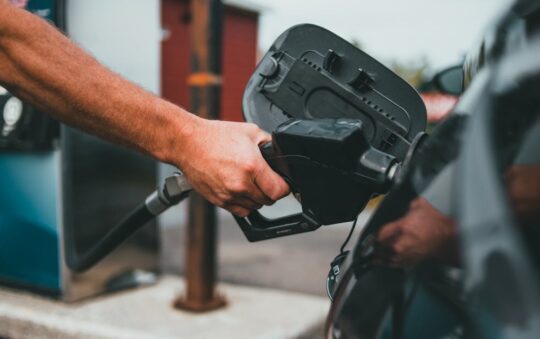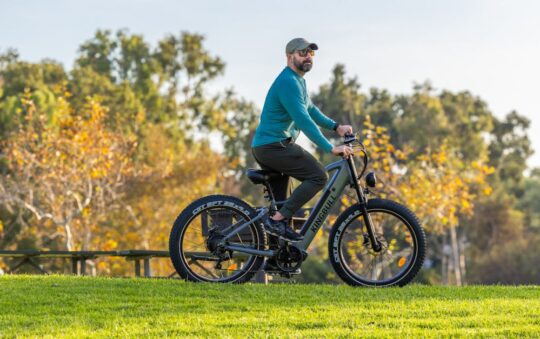Have you ever tried to cram your camping gear into an already bursting backpack and realized your pillow takes up half the space? I’ve been there—wrestling with bulky pillows that make packing a headache and sleeping uncomfortable. Finding a camping pillow that packs small but still offers real comfort feels like striking gold on the trail.
In this text, I’ll share the best compact camping pillows that don’t sacrifice support or coziness. Whether you’re a minimalist backpacker or a weekend camper, these picks will help you save space without losing a good night’s sleep under the stars. Let’s jump into the gear that makes your outdoor adventures lighter and more restful.
Features of Camping Pillows That Pack Small
Picking the right camping pillow means balancing comfort with packability. Here’s a close look at what makes these travel-friendly pillows tick so you know exactly what to look for.
Size and Weight
Small and light is the name of the game here. Camping pillows that pack down tiny usually collapse to about the size of a grapefruit or smaller. Many weigh less than 10 ounces which means they don’t weigh down your backpack.
I’ve found that having a pillow that compresses to a 5×5 inch bundle saves precious space. This is a must for anyone who likes minimalist packing. You don’t want your pillow hijacking half your bag!
Materials and Durability
Usually these compact pillows use materials like ripstop nylon or polyester with a soft microfleece cover. Ripstop nylon is a type of fabric that resists tears—great for rough outdoor use.
Look for water-resistant or quick-dry fabrics. That little extra protection saved me on a damp camping trip when my pillow scooted into a patch of morning dew. Durability matters since you don’t want your pillow to pop or wear out after a few nights.
Inflation Mechanism or Compression
Some camping pillows inflate themselves, some need a few breaths of air, and others are simply compressible foam.
- Air pillows: Inflating means adjusting firmness to suit your neck and head. Some have valves that make inflation quick and easy. (Who wants to huff and puff forever when setting up camp?)
- Foam pillows: Compressible foam pillows just squish into their stuff sack and spring back into shape at night. They don’t require inflation but pack a bit bulkier.
My go-to are pillows with adjustable air valves. Being able to fine-tune softness from rock-hard to fluffy cloud makes a surprisingly big difference for comfort.
Comfort and Support
Just because a pillow packs small doesn’t mean you have to sacrifice comfort. Look for pillows that offer good neck support without being too firm or too floppy. Many campers have told me that memory foam inserts or multi-layer designs help keep their spine aligned.
If you’re side sleeper like me, a slightly thicker pillow feels better. For back sleepers, flatter options often work fine. Trying a few at gear stores or reading user reviews can point you to the sweet spot.
Quick Tips for Choosing Your Pillow
- Prioritize an easy inflation method unless you hate blowing up pillows (like me)
- Check fabric texture for softness and durability
- Match pillow thickness to your sleeping position
- Keep your weight allowance in mind—every ounce counts on the trail
Packing a pillow that combines these features has transformed how I camp. It’s proof small gear can deliver big comfort without filling my pack.
Performance and User Experience
Camping pillows that pack small need to deliver more than just a tiny footprint. Here’s how these compact companions hold up when the going gets rugged and my neck demands a cozy place to rest.
Ease of Packing and Carrying
One thing I always notice is how easy a camping pillow is to stash away. The best compact pillows compress down to the size of a grapefruit or smaller. That means they fit snugly in my backpack without hogging precious space I need for snacks or extra layers. Lightweight designs—usually under 10 ounces—make a noticeable difference when I’m carrying everything on my back for miles.
Some pillows come with stuff sacks or integrated compression sacks. These let you squash the pillow down even more, smashing any stubborn air pockets. I’ve found inflatable types especially convenient because you can adjust firmness and then roll them up super tight. Foam pillows don’t get quite this small but offer instant use without inflation—great if you want simplicity.
Quick tips to pack light:
- Choose pillows with built-in compression bags.
- Look for inflatables if you want adjustable firmness.
- Double-check pillow weight if every ounce counts.
Comfort During Use
Comfort varies widely with these little guys. I’ve tested models with different fill materials—memory foam, inflatable air chambers, and self-inflating foam. What matters most is how well the pillow supports my neck and head without feeling like a flat pancake or a rock.
Inflatable pillows shine because I can tweak firmness. I like mine a bit puffier, but some prefer firm support to keep their neck in alignment. Foam pillows usually have a fixed shape but offer consistent cushioning and don’t deflate overnight.
Fabric texture also makes a real difference. Soft, brushed polyester or nylon feels nice against bare skin, whereas slick or rough fabrics can irritate after a few hours. Waterproof or water-resistant shells keep the pillow dry even if a sudden rain shower hits or the ground is damp.
I once camped on a rocky ridge and the extra cushioning from a self-inflating pillow made the difference between waking with a sore neck and feeling ready to hike again.
Longevity and Maintenance
No one wants to buy a pillow that falls apart after one camping season. Durable materials like ripstop nylon or polyester handle abrasions and punctures much better than cheap fabrics. Double stitching and reinforced seams have saved my pillow from disastrous leaks more than once (thanks to an overly enthusiastic raccoon).
Maintenance is pretty straightforward but varies by pillow type. Inflatable pillows usually need a quick wipe-down and occasional air leaks fixed with patch kits. Foam pillows are even simpler—just shake out dirt and let them air dry if they get wet. Machine washable covers are a bonus, especially if you like to keep things fresh after a sweaty summer hike.
Some lightweight pillows are water-resistant which helps prevent mildew and keeps odors from setting in—a big win if you’re out for more than a night or two.
Maintenance checklist:
- Always dry your pillow completely before packing it away.
- Check for leaks on inflatables and patch early.
- Wash removable covers regularly to avoid buildup.
I’ve found that a well-made compact pillow can last many seasons if taken care of right, making it a friendly investment for comfort on the trail.
Pros of Camping Pillows That Pack Small
One of the biggest perks of camping pillows that pack small is how easy they are to carry without filling up your backpack. I’ve been out on trail days when every ounce and inch counts. These compact pillows fit snugly into my gear bag or attach effortlessly to the outside without adding bulk. That means more room for other essentials—like snacks or that unexpected souvenir you find along the way.
Comfort doesn’t have to take a backseat either. Many small camping pillows use materials like memory foam or inflatable air chambers. These adjust nicely to your head and neck, giving support without the clunk of traditional bulky pillows. Some models even come with soft, breathable covers that feel great against the skin after a long day hiking or sitting by the campfire.
Durability often gets overlooked but it’s a big deal out there in the wild. The best small camping pillows use tear-resistant fabrics like ripstop nylon; this keeps them safe from scrapes or rough surfaces. I’ve had one that went through a few falls and still inflated perfectly after washing off the dirt. That kind of toughness means fewer replacements and more dependable naps.
Another huge win: quick setup and pack down. Inflatable pillows with valve systems can be ready in seconds. And when you’re ready to hit the trail, they compress back down to their tiny size without a fuss. I once timed it—pumping up took less than a minute, and stuffing it back into the sack was just as fast.
Here’s a quick look at what these pillows bring to the table:
- Space-saving: Compresses to a small size, freeing up valuable backpack real estate
- Lightweight: Usually under 10 ounces, making your pack easier to carry
- Comfortable: Supports your head and neck well, often with soft fabric covers
- Durable: Built with tough, water-resistant fabrics for long-lasting use
- Easy to use: Inflates or unfolds quickly for hassle-free setup
All in all, these small but mighty pillows are a smart choice for anyone wanting to pack light but sleep tight. If you’ve ever felt like lugging around a giant pillow makes camping harder than it should be, giving these compact options a try might be just what your pack needs.
Cons of Camping Pillows That Pack Small
While camping pillows that pack small make your backpack lighter and your sleep comfier, they aren’t perfect. I’ve noticed a few trade-offs that might affect your decision if you’re picky about certain features.
First up is the comfort compromise. Since these pillows shrink down to fit in tight spaces, they often use thinner materials or less stuffing. That can mean less plushness and support compared to bulkier pillows. If you’re a side sleeper or someone who needs firm neck support, some compact models might feel a bit flat or lumpy. I’ve tried a few where I had to double up or add a t-shirt underneath for the extra cushion — not ideal but manageable.
Durability can also take a hit. To pack small, manufacturers tend to use lightweight ripstop nylon or thin polyester fabrics. They’re great for weight savings but can be more prone to abrasion or tiny punctures from sharp sticks or rough tent floors. A couple of fellow campers I know had to patch their pillows after a few trips. That said, many brands include repair kits or reinforce high-wear areas to combat this.
Here’s the kicker: inflation time and convenience can vary. Inflatable versions deflate to almost nothing but require blowing up or pumping, which isn’t always relaxing after a long day. Self-inflating pillows aim to solve that but usually pack a bit bigger and heavier. Compressible foam pillows come ready to use but rarely squash down as tiny as inflatable ones. So, it’s a bit of give and take depending on your packing style and patience level.
Finally, some compact camping pillows tip the scale at around 8 to 10 ounces. That’s light but for ultra-light backpackers who count every gram, it might still feel too hefty. You might find yourself debating between minimal neck support and a few extra ounces in your pack.
Here’s a quick list to help you decide if these small-pack camping pillows fit your needs:
- Comfort: Slightly thinner and less plush compared to larger options
- Durability: Lightweight fabric can be more fragile
- Setup: Inflatable versions need blowing up; foam options are bulkier
- Weight: Light but sometimes still noticeable for ultra-light hikers
Comparison With Regular Camping Pillows
When I first started camping, I always grabbed a regular camping pillow, thinking comfort was everything. But after switching to pillows that pack small I noticed some clear differences that really changed how I travel light and sleep better.
Size and Portability
Regular camping pillows tend to be bulky and take up valuable space in your backpack. They might feel cozy but stuffing them down into your pack gets tricky fast. Compact camping pillows, on the other hand, shrink down to about the size of a grapefruit or even smaller. This makes a huge difference when packing for multi-day trips or tighter spaces.
Here’s a quick comparison:
| Feature | Regular Camping Pillows | Compact Camping Pillows |
|---|---|---|
| Typical Packed Size | Medium to large | Small to very small |
| Weight | Often over 1 lb (16 oz) | Under 10 oz |
| Packability | Poor – bulky and awkward | Excellent – fits in tight spots |
If you prefer traveling light (like me), these little pillows slide right into your pack without hogging space or adding noticeable weight. Plus, many come with compression stuff sacks, making packing even simpler.
Comfort Levels
Here’s where compact pillows get a bit tricky. Regular camping pillows tend to have more padding and can feel softer because they pack more material. That said, they aren’t always the best choice for backpackers since size matters a lot on the trail.
Compact camping pillows vary widely by type. Memory foam versions offer better neck support and feel closer to home comfort. Inflatable models let you adjust firmness on the fly but require a little time to blow up (or pump). For side sleepers like me, sometimes a compact pillow can feel a bit thin, but choosing one with a thicker profile or adjustable inflation can fix that.
If comfort is your top priority and you don’t mind the bulk when driving to campsites, regular pillows may suit you better. But for hikers or those who prize pack space, compact options strike a nice balance between comfort and practicality.
Price and Value
Cost-wise, regular camping pillows are often more affordable because they use simpler foam or polyester filling and less specialized fabrics. But remember, a pillow that’s easier to carry and doesn’t eat space might save you more hassle (and maybe even back pain) in the long run.
Compact camping pillows usually run from $20 to $60 based on features like self-inflating capability, memory foam, and durable fabrics. Here’s what I consider:
- If you camp frequently and haul gear yourself, investing in a lightweight pillow that packs small pays off by saving you energy and back strain.
- For occasional campers or car campers, a regular pillow might give you the comfort boost you want without very costly.
- Look for pillows with tear-resistant/ water-resistant covers – these last longer and keep your pillow clean in the outdoors.
A quick tip: check user reviews to see if the pillow holds its shape after repeated use or inflations. This often tells you if you’re getting good value or just a cute but short-lived gadget.
Packing light doesn’t have to mean sleeping rough. It’s about matching what’s in your bag to your trip style and comfort needs. And sometimes, that means swapping your old bulky pillow for one that fits better without sacrificing those precious hours of shut-eye.
Alternatives to Camping Pillows That Pack Small
Finding a camping pillow that packs small is awesome. But sometimes, you might want to try something a bit different that still saves space and keeps you comfy on the trail. I’ve explored some alternatives that can do the job without adding bulk.
DIY Solutions
Sometimes the best pillow is the one you make yourself. DIY camping pillows are surprisingly easy and often pack down to almost nothing.
- Using Clothes as a Pillow: I’ve gone on trips where stuffing a dry fleece jacket or sweatshirt into a stuff sack created a surprisingly cushy headrest. This method means no extra gear, and you get the bonus of a warm layer handy for chilly nights.
- Pillow Cases with Inflatable Inserts: Some campers slip a small inflatable bladder (even a packable water bag works) inside a pillowcase or dry bag. Fill it just right, and you have a custom-sized pillow that’s lightweight and packs tiny.
- Compressible Foam Chunks: For those who value memory foam feel but want less weight and size, I cut small pieces from old foam cushions. Wrap them tightly in a stuff sack, and they mold to your neck and shoulders better than a flat pad.
The trick with DIY options is balancing softness and support with how quickly you want to set up camp. I wouldn’t rely on these for multi-night backpacking without testing first, but they’re fantastic for weekend trips or emergencies.
Other Compact Sleeping Accessories
If you’re open to alternatives beyond pillows, some other lightweight gear can boost neck and head comfort while staying easy on pack space.
- Inflatable Neck Pillows: These are the travel industry’s go-to for tiny packed size. They blow up fast, deflate flat, and pop in an outside pack pocket. I found models with soft velour covers especially comfy for camping.
- Sleeping Pads with Built-In Headrests: Some sleeping mats have a slightly elevated section for your head. Not everyone loves this but if you’re tight on room carrying both a mat and pillow, this is a neat combined option.
- Microfiber Travel Towels: When rolled or folded snugly, microfiber towels provide a cushioned layer that you can arrange under your head or neck. Bonus: they dry fast so you can use them to freshen up as well.
- Packable Hammock Pillow: If you camp in a hammock this can be a godsend. Many hammock-specific pillows compact down to the size of a soda can and support your neck well.
Here’s a quick comparison of common alternatives and their pack sizes along with pros and cons:
| Alternative | Approx. Packed Size | Pros | Cons |
|---|---|---|---|
| DIY Clothes Pillow | Varies (small as folded clothes) | No extra gear, multi-use | Support varies, weather-dependent |
| Inflatable Neck Pillow | Tennis ball or smaller | Very lightweight, fast setup | Can leak or puncture |
| Sleeping Pad Headrest | Integrated with mat | No extra item, comfy | Limited size, less customizable |
| Microfiber Towel | Small and flat | Multi-purpose, quick drying | Less cushy than pillow |
| Hammock Pillow | Soda can size | Perfect for hammock camping | Only for hammock users |
If you ever feel like your pillow is taking up more space than your snacks, trying one of these might lighten your pack and keep your head happy at night. (I have a microfiber towel that’s been on three hikes and counting—still going strong!)
Quick Tips for Choosing Alternatives:
- Think about your sleeping style. Neck support helps side sleepers more than back sleepers.
- Test setup time at home. No one wants to tackle complicated gear after a long hike.
- Check materials for weather resistance. Sleeping damp isn’t fun for anyone.
- Carry a stuff sack or dry bag for whatever you pick. It helps keep things clean and compressible.
Hands-on Experience and Testing
Testing camping pillows that pack small meant putting them through real-life trail conditions and everyday campsite use. I wanted to see how they’d perform when it mattered most—during setup, throughout the night, and while packing up before hitting the trail again.
Setup and Use in Various Conditions
Setting up compact camping pillows was surprisingly quick across different scenarios. Inflatable pillows needed just a few breaths to inflate—perfect when you’re eager to hit the hay after a long day. Self-inflating foam pillows took slightly longer but still required minimal effort compared to bulky traditional pillows.
In damp or chilly weather, some pillows felt cooler on contact, but models with velvety or microplush covers made a noticeable difference in comfort. One standout was a pillow with water-resistant fabric that resisted morning dew nicely, meaning no soggy pillow headaches.
Small stuff sacks or compression bags included with most pillows made it easy to pack away quickly. Even after multiple inflations and deflations, the pillows bounced back to their original compact size without trouble, which is key when your backpack space is limited.
Here are some quick setup and use tips I picked up:
- Inflate your pillow while setting up your tent to save time.
- Bring a small microfiber cover if your pillow fabric feels too slick or cold.
- For colder nights, layering the pillow inside your sleeping bag can add warmth.
- Always pack pillows in their sacks to avoid snagging on rough gear or tree branches.
Impact on Sleep Quality
After testing, I found sleeping on compact camping pillows surprisingly supportive. Those with memory foam or cushioned inserts helped keep neck alignment steady, even if you’re a side sleeper or shift positions a lot. Inflatable versions gave you control over firmness, which felt like customizing your pillow on the fly.
Still, if you prefer a cloud-like pillow at home, these smaller options may take some getting used to—they’re more about balance between comfort and portability. I noticed less stiffness in my neck compared to using no pillow or stuffing clothes, especially on longer trips.
One thing to keep in mind: pillows that pack small often feature thinner profiles to reduce bulk. That means if you’re a back sleeper who likes extra loft, pick a model with adjustable firmness or consider combining with a slim sleeping pad for better head support.
From my experience here’s a quick snapshot of how these camping pillows influenced rest quality:
| Pillow Type | Comfort Level | Neck Support | Best For |
|---|---|---|---|
| Memory Foam | Medium to High | Good | Side sleepers, moderate firmness |
| Inflatable Air Pillow | Adjustable firmness | Variable | All sleeping positions, customizable |
| Self-Inflating Foam | Firm | Solid | Back sleepers, those needing firm support |
| DIY/Clothes Pillow | Low to Moderate | Minimal | Light packers or emergency use |
Getting good sleep outdoors can really change how much you enjoy your trip (and how energized you feel for hiking). Compact pillows may not replace your bedroom cushion but they made my camp naps and overnights far more restful—and they slide into a pack like a champ.
Conclusion
Finding the right camping pillow that packs small can transform your outdoor sleep experience. It’s all about balancing comfort with convenience so you can carry less without losing support. Whether you choose a compact inflatable, memory foam, or a clever DIY option, the key is selecting something that fits your sleeping style and backpack space.
After testing various options, I can confidently say that investing in a quality compact pillow is worth it. It makes your trips lighter and your rest better, which is essential for enjoying every moment on the trail. Keep comfort and packability in mind, and you’ll wake up refreshed and ready for whatever adventure comes next.
Frequently Asked Questions
What makes a camping pillow “compact”?
A compact camping pillow is small, lightweight, and easy to pack, typically compressing to about the size of a grapefruit or smaller and weighing less than 10 ounces. It balances comfort with minimal bulk, ideal for backpackers and campers who want space-saving gear.
Which materials are best for durable camping pillows?
Ripstop nylon or polyester with water-resistant coatings are preferred for durability and outdoor use. These fabrics resist tears and moisture, extending the pillow’s lifespan in rugged conditions.
How do inflatable camping pillows compare to foam ones?
Inflatable pillows pack down smaller and can be quickly inflated to provide customizable support. Foam pillows offer consistent shape and support but usually take up more space due to their fixed size.
Are compact camping pillows comfortable for all sleeping positions?
Yes, many compact pillows use supportive materials like memory foam or adjustable air chambers to accommodate different sleeping styles, including side, back, and stomach sleepers.
What are some space-saving alternatives to traditional camping pillows?
You can use DIY pillows made from rolled clothes, inflatable neck pillows, sleeping pads with built-in headrests, or packable hammock pillows. These alternatives offer varying degrees of comfort and packability.
How important is pillow weight for backpacking?
Since backpackers aim to reduce load, pillow weight is crucial. Compact camping pillows usually weigh under 10 ounces, helping to minimize overall pack weight while still providing comfort.
Do compact camping pillows require special care?
Most are easy to care for; spot cleaning with mild soap and air drying is recommended. Using stuff sacks can protect the fabric from dirt and damage during travel.
Are compact camping pillows more expensive than regular ones?
Compact pillows tend to be pricier upfront due to advanced materials and design but can save money long-term by reducing wear on your gear and improving comfort on multi-day trips.
How quickly can I set up a compact camping pillow?
Inflatable pillows can be ready in seconds by blowing air or using built-in pumps, while foam pillows need no setup. Both options pack away quickly, making them convenient for camping.
Is investing in a compact camping pillow worth it?
Yes, for frequent campers and backpackers, a well-made compact pillow enhances sleep quality, reduces pack bulk, and improves outdoor comfort, making it a valuable investment.




